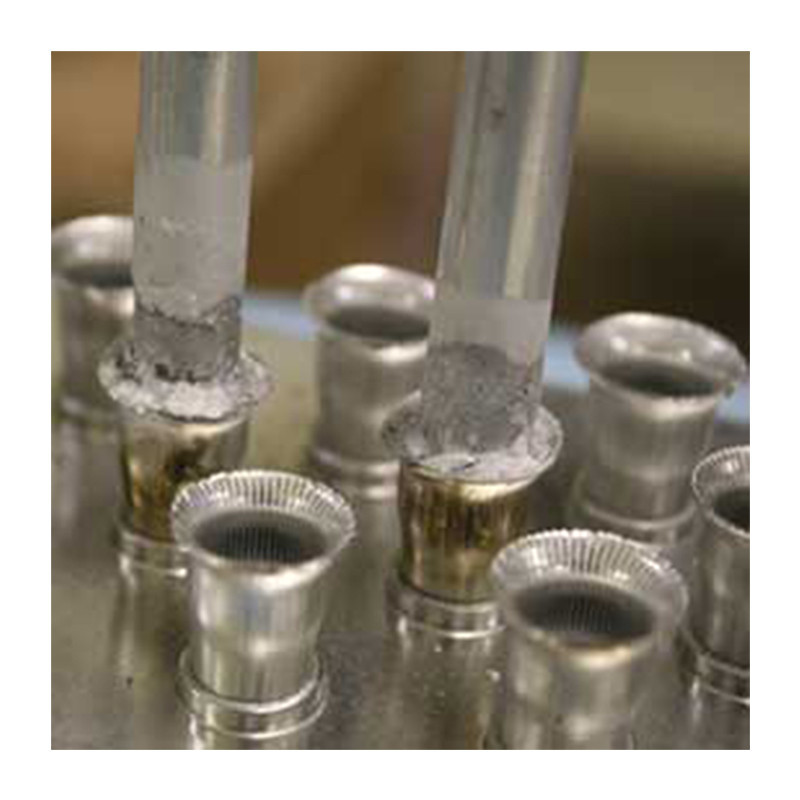

Морате бити пријављени да
Category


Фотографије су само у информативне сврхе. Погледајте спецификацију производа
please use latin characters
Тврдо лемљење је поступак спајања металних елемената помоћу легура за лемљење чија је тачка топљења изнад 427 °C, али нижа од тачке топљења делова који се спајају. Ова техника омогућава спајање сличних и различитих метала.
Лемљени спојеви:
Врста лема која се користи у процесу тврдог лемљења зависи од делова који се спајају. Најчешће се користе лемови на бази бакра и фосфора, сребра, алуминијума, бакра, никла и кобалта.
Модерно индукционо грејање обезбеђује поуздано, бесконтактно и енергетски ефикасно загревање за минимално време без употребе пламена. Време једног циклуса индукционог грејања је знатно краће у поређењу са лемљењем пламеном, тако да се више делова може обрадити у истом периоду уз мање ослобађање топлоте у околину. Индукционо лемљење омогућава контролу времена, температуре, причвршћивања и положаја делова, што чини процес понављивим и обезбеђује једнак крајњи резултат.
Полупроводнички системи могу загрејати врло мале површине у уским толеранцијама производног процеса без нарушавања металуршких својстава. За велике количине или процесе који захтевају висок квалитет, делови се могу лемити индукционо у инертној атмосфери без флукса и скупих процедура чишћења, чиме се смањује оксидација.
Да ли вас занима овај производ? Да ли су вам потребне додатне информације или појединачне цене?
морате бити пријављени
Тврдо лемљење је поступак спајања металних елемената помоћу легура за лемљење чија је тачка топљења изнад 427 °C, али нижа од тачке топљења делова који се спајају. Ова техника омогућава спајање сличних и различитих метала.
Лемљени спојеви:
Врста лема која се користи у процесу тврдог лемљења зависи од делова који се спајају. Најчешће се користе лемови на бази бакра и фосфора, сребра, алуминијума, бакра, никла и кобалта.
Модерно индукционо грејање обезбеђује поуздано, бесконтактно и енергетски ефикасно загревање за минимално време без употребе пламена. Време једног циклуса индукционог грејања је знатно краће у поређењу са лемљењем пламеном, тако да се више делова може обрадити у истом периоду уз мање ослобађање топлоте у околину. Индукционо лемљење омогућава контролу времена, температуре, причвршћивања и положаја делова, што чини процес понављивим и обезбеђује једнак крајњи резултат.
Полупроводнички системи могу загрејати врло мале површине у уским толеранцијама производног процеса без нарушавања металуршких својстава. За велике количине или процесе који захтевају висок квалитет, делови се могу лемити индукционо у инертној атмосфери без флукса и скупих процедура чишћења, чиме се смањује оксидација.
Vaša zahvalnost na komentar ne može biti registrovana
Prijavite nepristojan komentar
Prija nepristojnog komentara registrovana
Vaša prijava nepristojnog komentara ne može biti registrovana
Write your review
Komentar poslat
Vaš komentar ne može biti registrovan
